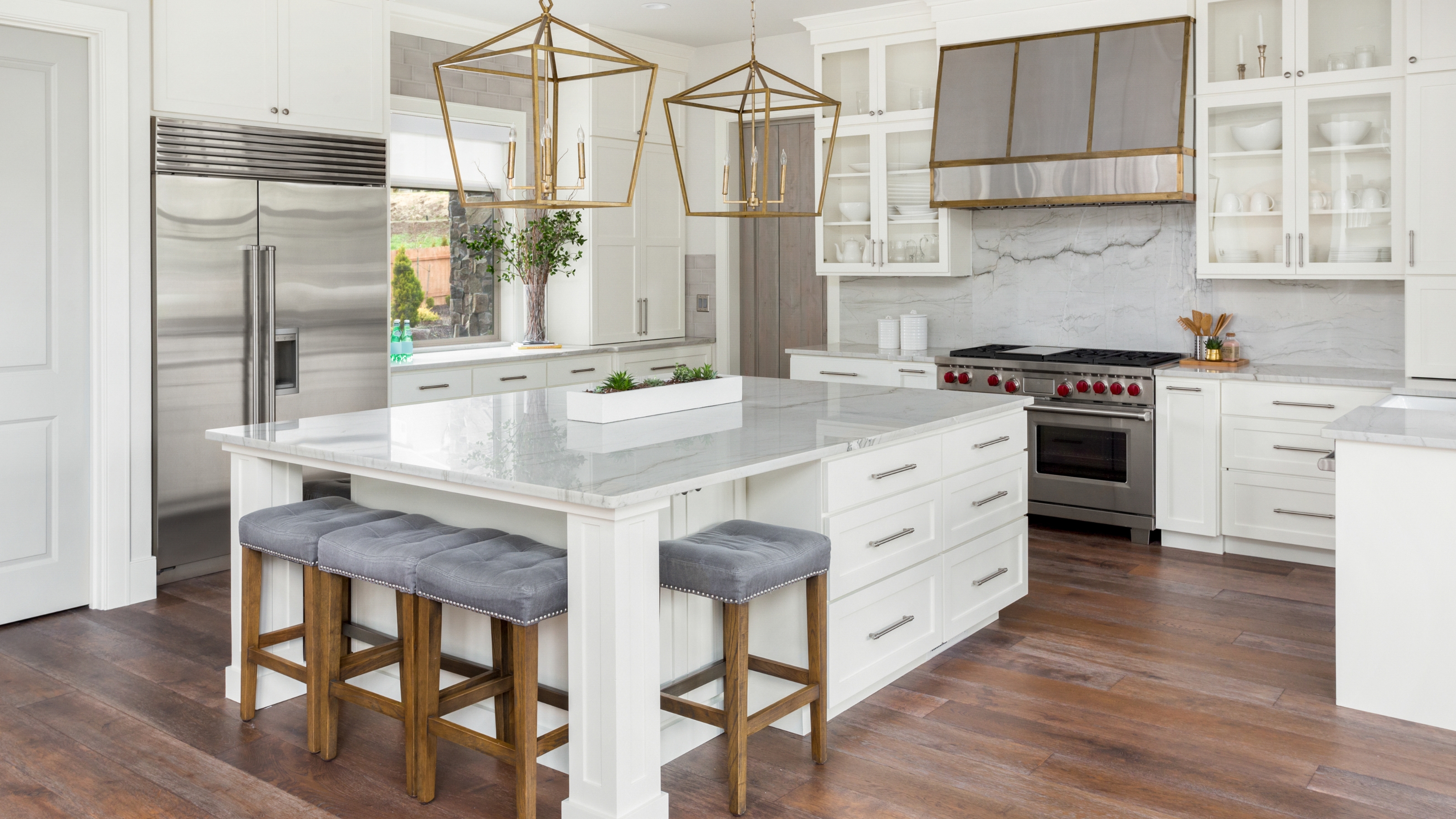

Choosing the best types of flooring for each area in your home is no easy feat. There is a lot to weigh up, whether you're considering hardwood flooring, tile, vinyl or a classic stone floor... It depends on the room itself, your household needs and your budget.
You'll find that the more durable, beautiful and resilient the type of floor material, the more expensive it becomes – naturally. But, in saying that, there are now less costly alternatives available for the bathroom, kitchen, living room and beyond. It's all about being clever in your choices. Mixing and matching different types of flooring across your home can make for a streamlined look – without a big spend. All while you meet every room's needs in terms of style, resistance to humidity, the weight of furniture and of foot traffic, of course.
Best types of flooring for your home
1. Hardwood
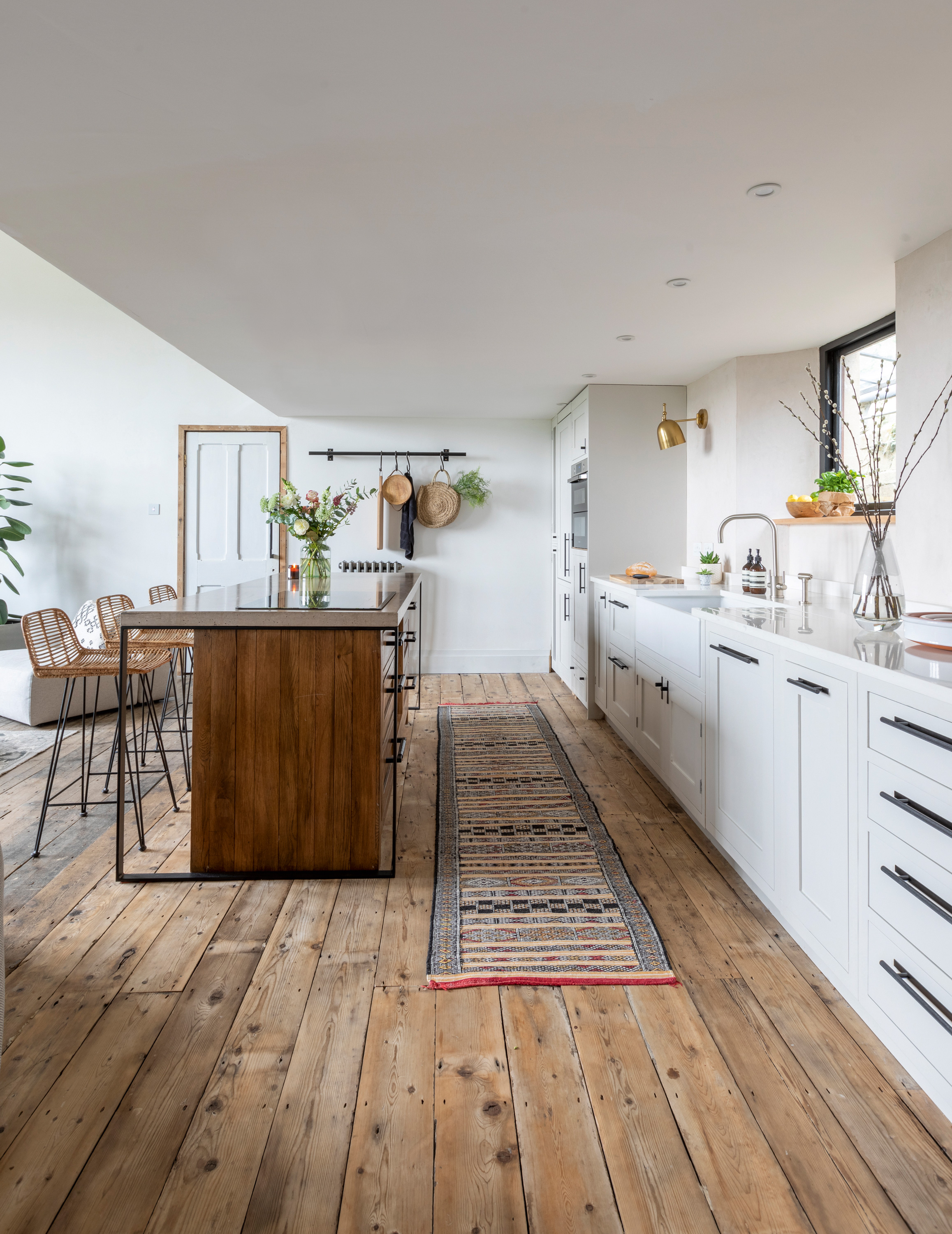
Best for most homes
Super popular in homes everywhere not only because wooden flooring is gorgeous and suits many a different interior design scheme – be that more polished and contemporary or rustic farmhouse – with varying grains, tones, and finishes, but also because hardwood is very durable and resilient when treated and cared for properly. Wood is usually lacquered or oiled, depending on the look you prefer.
DAndrew Barker, Founder & CEO of HomeownerCosts adds, "real estate experts say that hardwood flooring could increase the resale value of your home as it's such a sought-after feature for many."
Leslie Saul of Leslie Saul & Associates, Inc. agrees that engineered or natural plank wooden floors can be used everywhere in the home when properly finished. 'It adds natural warmth to a space, is available in many species and many widths and lengths."
Barker notes also that 'When exposed to moisture for a long time it can warp making them not fit for bathrooms or laundry rooms." So you may not be able to install hardwood flooring everywhere.
Advantages
- Versatile and can complement all types of interiors
- Long-lasting and will withstand up to five refinishes to remove surface scratches
- Can be laid in many patterns to add more style impact
- Adds resale value
- Can paint or stain
- Adds natural warmth
- Easy cleaning
Disadvantages
- Cost and the upkeep
- Usually need a professional's help to get a good finish
- Prices vary according to the thickness of the decorative wood veneer and the quality of the core
- Cannot be exposed to moisture
- Prone to UV bleaching
2. Engineered wood
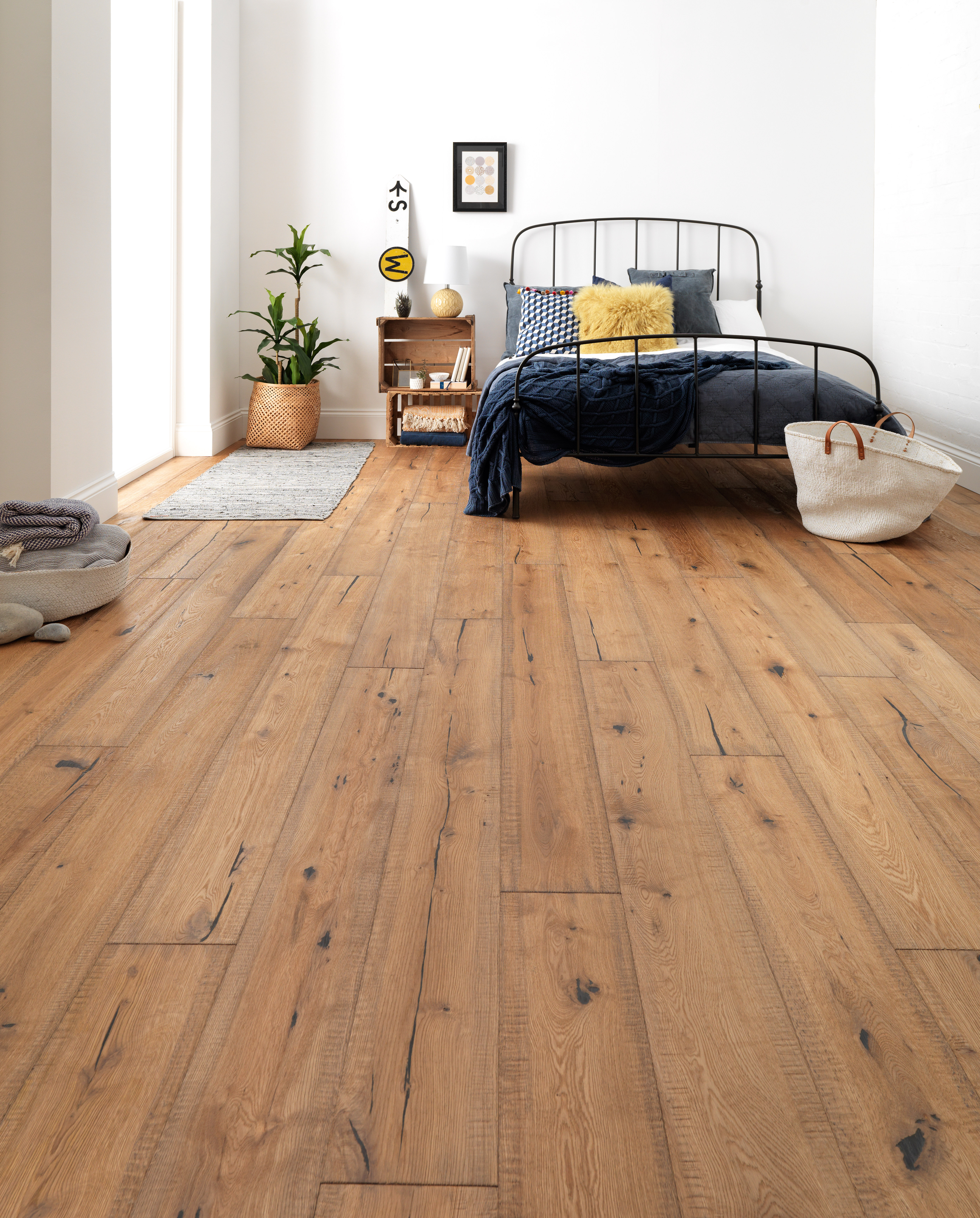
Best for homes with changing temperatures
Engineered wood floors feature a real wood veneer over a middle core of heat-formed wood and a base-supporting layer (used where shrinkage might be a problem). The stability of engineered flooring makes it a perfect choice over underfloor heating if the guidelines are followed, it is easier to lay than solid wood flooring.
Top tip: Treat it with a high-quality coating as you would with hardwood to preserve its quality.
Advantages
- More dimensionally stable
- Less likely to expand or contract with temperature changes or fluctuations in humidity
Disadvantages
- Unlike hardwood, it won't take to refinishing so well because of the thinner top layer
3. Laminate flooring
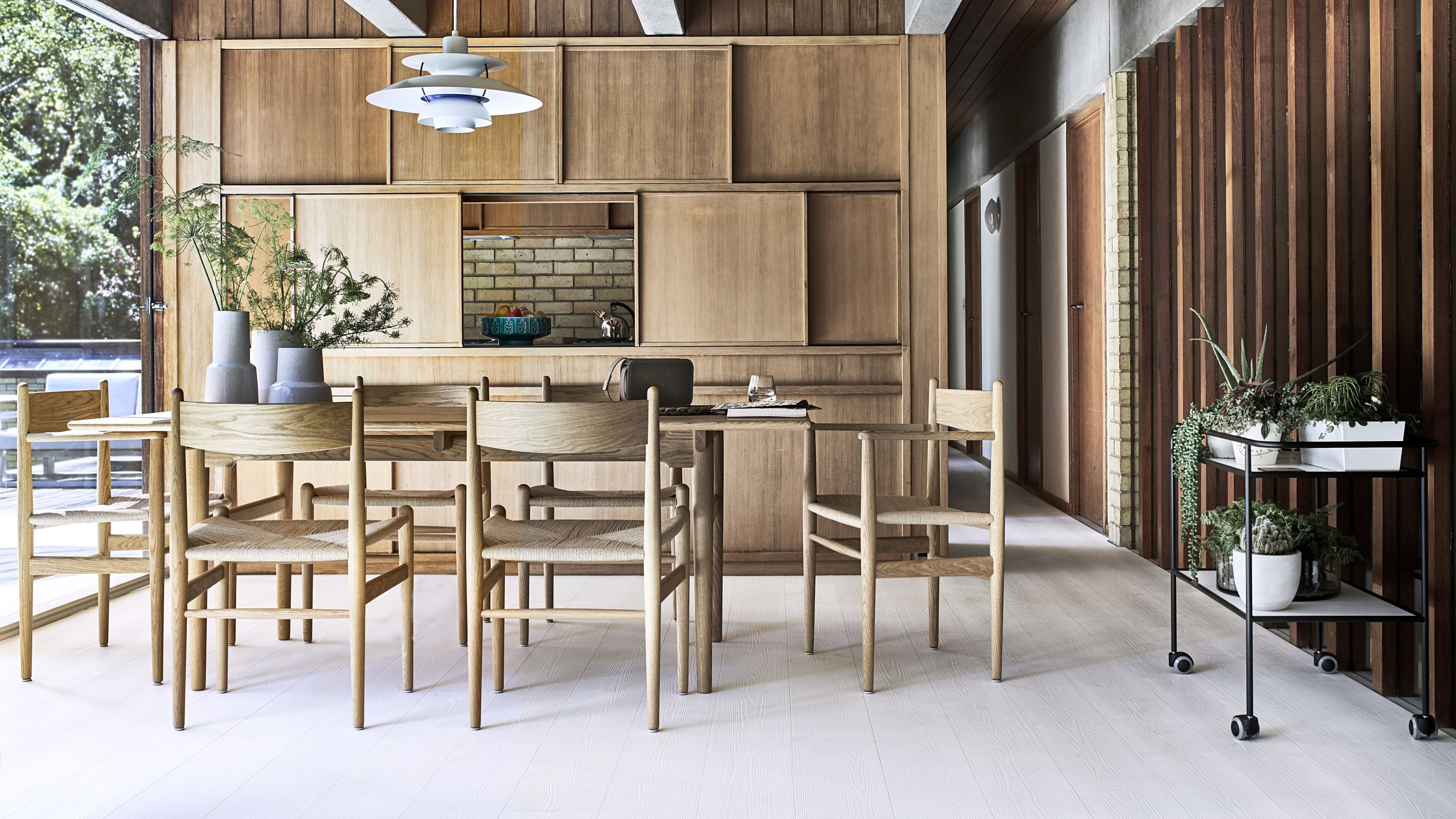
Best for an easy DIY
Laminate flooring is made from layers of high-density fiberboard with a photographic image (of timber, tile, etc) laminated to the surface below a tough, wear-resistant coating.
Top tips: Saul notes that you should avoid really cheap faux wood laminate flooring as this will only be reflected in the quality. Generally speaking however, "it is easy to maintain and it is durable." Saul also recommends laminate flooring for basement locations.
Advantages
- Price
- Anti-scratching properties
- Ease of installation
- Great choice for a busy household
Disadvantages
- Can feel cold and hard underfoot
- If laid badly, it may also be noisy and clunky
4. Real stone flooring
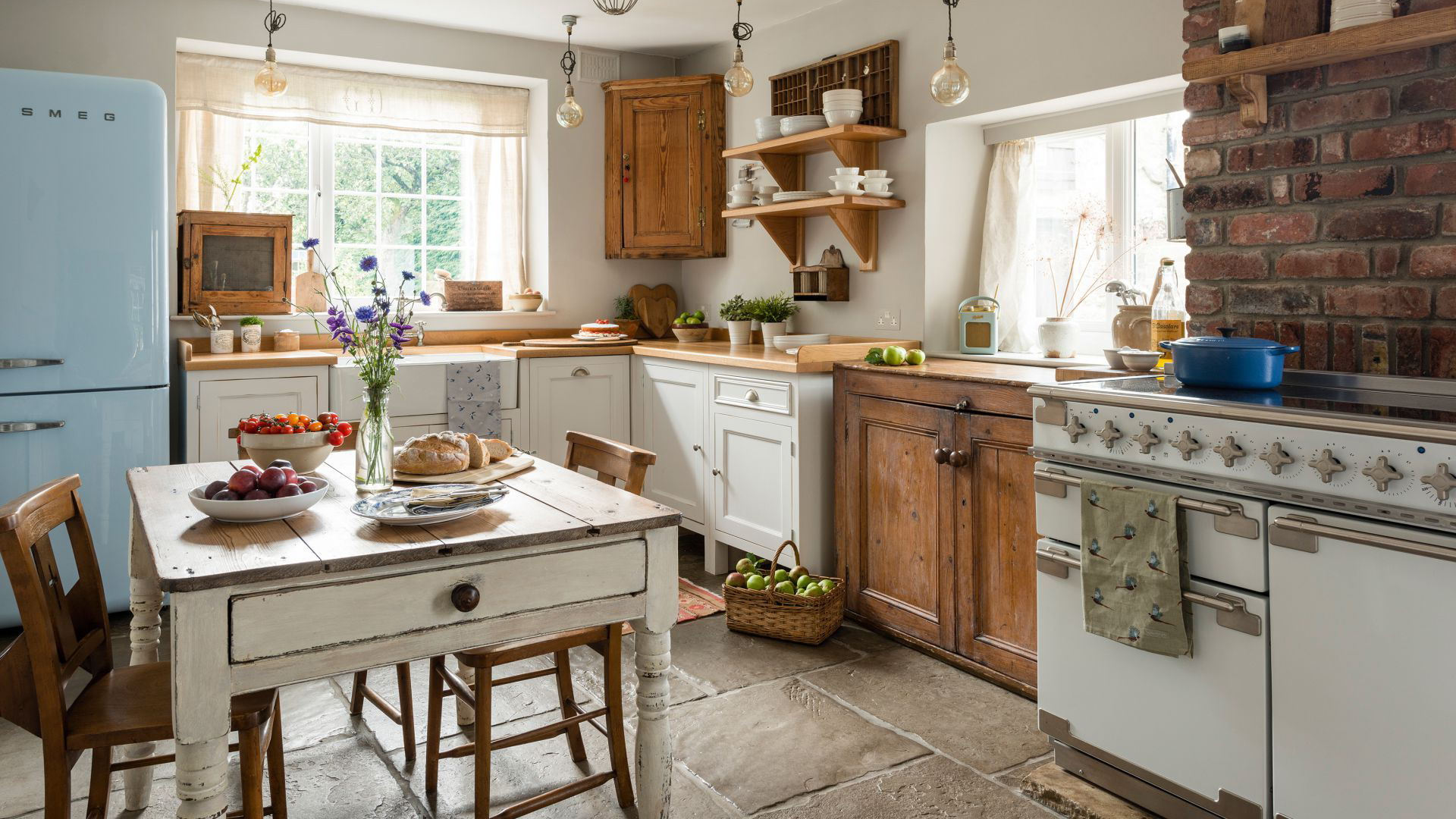
Best for a long-term investment
Real stone flooring types offer a stylish and really practical long-term flooring solution, especially in kitchens and bathrooms. When it comes to types of stone flooring, options include limestone, slate, marble, and terracotta tiles, each of which brings character and warmth to a kitchen, bathroom, or hallway and can look very elegant in a living room.
"Stone can be used everywhere in the home, but due to its expense and permanence, it generally is used primarily in spaces for cooking, eating and bathing in climates that are not hot year round." Adds Leslie.
Top tips: Really consider the room, and if there are little ones around, ensure some area rugs are around for protection to little knees.
Advantages
- Should last forever
- Adds value to property
- Porosity that allows the stone to take on the ambient temperature of a room
- Dever feels as cold or hard underfoot as ceramic tiles
- Won't harbor dust mites or pet hair so is a great option for allergy sufferers
Disadvantages
- Must be adequately sealed when it’s first laid and re-sealed at least every six months thereafter
- Possibility of cracking/chipping if not well laid
5.Tile floors
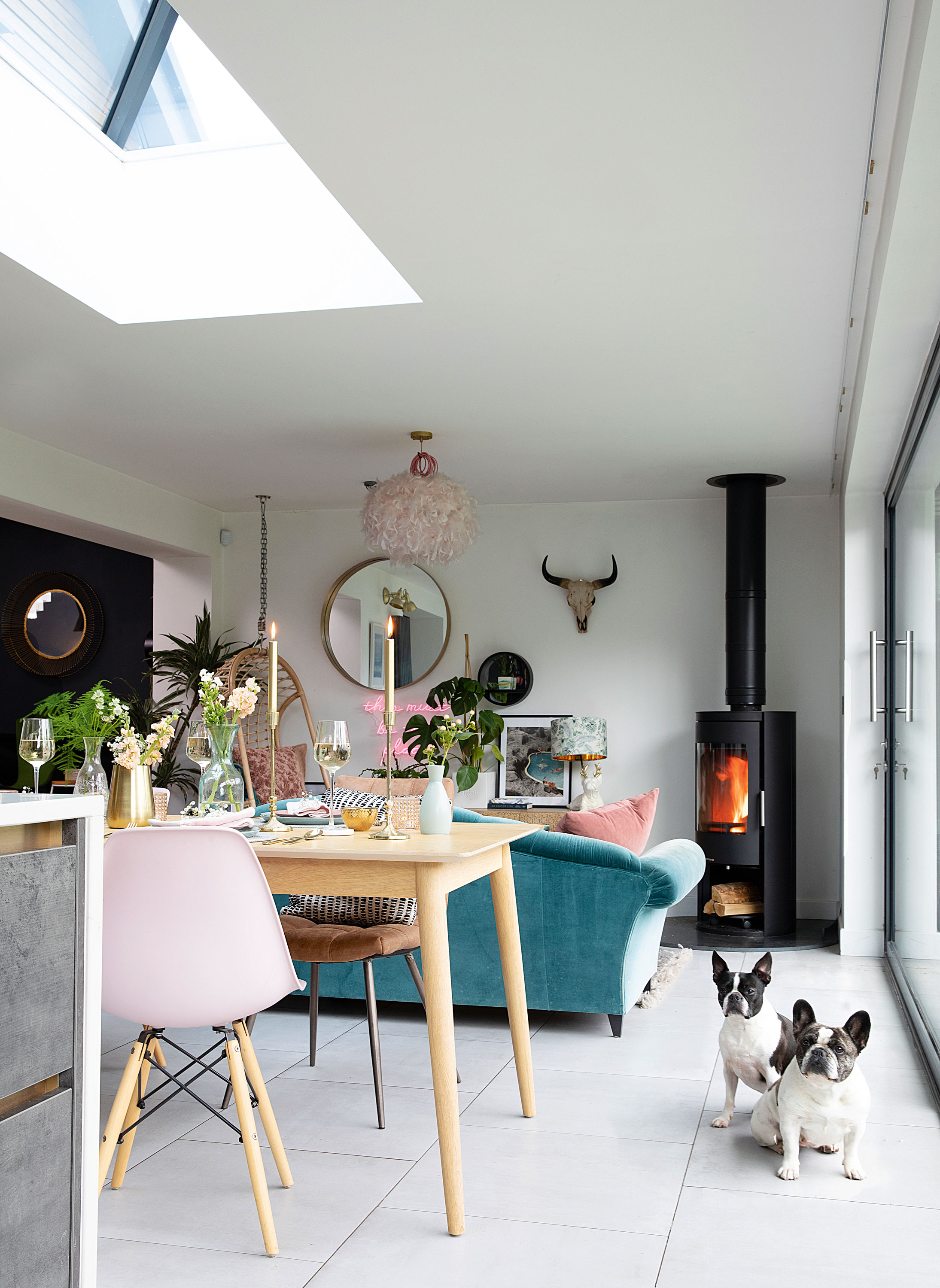
Best for creative designs
Our love of tile is never-ending and it's one of the most durable, stylish, and contemporary types of floorings for kitchens, bathrooms, and hallways.
The world of decor is your oyster with tile as the different patterns, finishes, and colors available are endless. It takes a lot of thought also as the right style, shape, size and even how you install tiles can enhance a small space, add warmth and so much character too if done correctly.
"Tile has so many options, both in quality, texture, pattern, and color that it can require an interior designer or architect to figure it out! Tile can add the punch to a design that is hard to get in other ways." Says Leslie.
Top tips: "Consider the room in which you’re laying the tiles and choose the surface finish carefully as highly polished stone can be very slippery when it’s wet, while matte finishes attract dirt more easily. In very wet areas, such as showers, be sure to use smaller-scale tiles to be less slippery. In cold climates, underfloor heating can be added." Says Leslie.
Advantages
- Lots of design options
- Easy to clean
- Can withstand water
- Low-maintenance
- Wears well and resistant to scratches and dents
Disadvantages
- Can be expensive
- Feels cold underfoot
6. Resin or concrete flooring
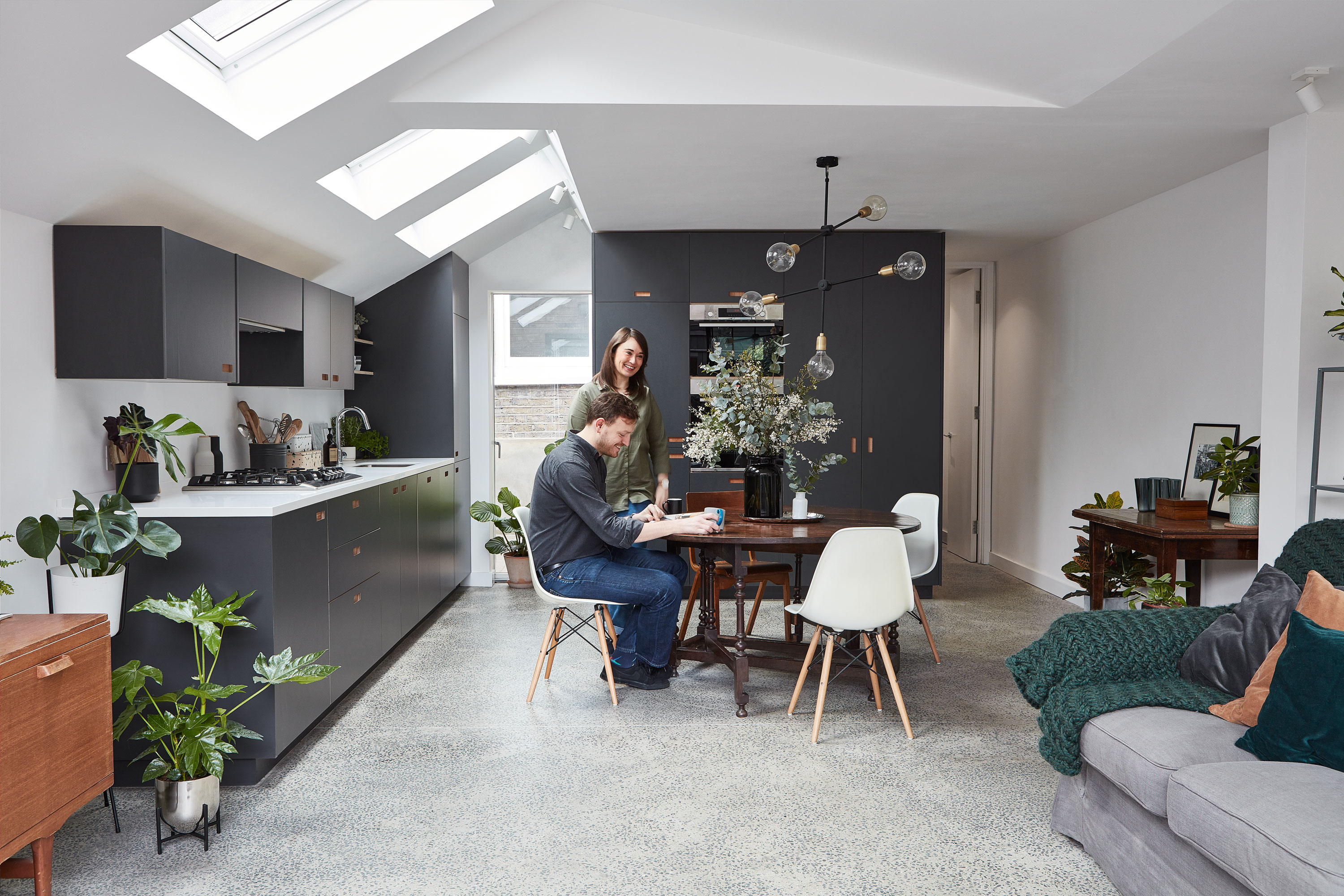
Best for homes with lots of wear and tear
Concrete floor types needn't be reserved for the garage and make a great addition to open plan kitchens, patios, and even living rooms. Resin makes the perfect addition to a bathroom, kitchen, conservatory, utility area, or contemporary living room also and is available in any RAL color, with some designs incorporating stone or glitter. In fact, anything you can think of captured within the resin to add interest.
Team with underfloor heating, pour it from wall-to-wall, go matte, or with a glossy finish for a bit of glamour – it's totally up to you. Note that resin tends to be a stronger material.
Top tips: If you're concerned about surface scratches, a sealant can be applied every now and then for added protection. Poured resin can be used on most sub-floors and takes between two to five days to install. It’s not a budget option but a great choice for a busy family home.
Advantages
- Smooth and seamless look
- Noise-absorbing
- Hypoallergenic
- Waterproof
- Hard-wearing
- Easy to clean
Disadvantages
- Cost
- Takes between two to five days to install
7. Vinyl floors
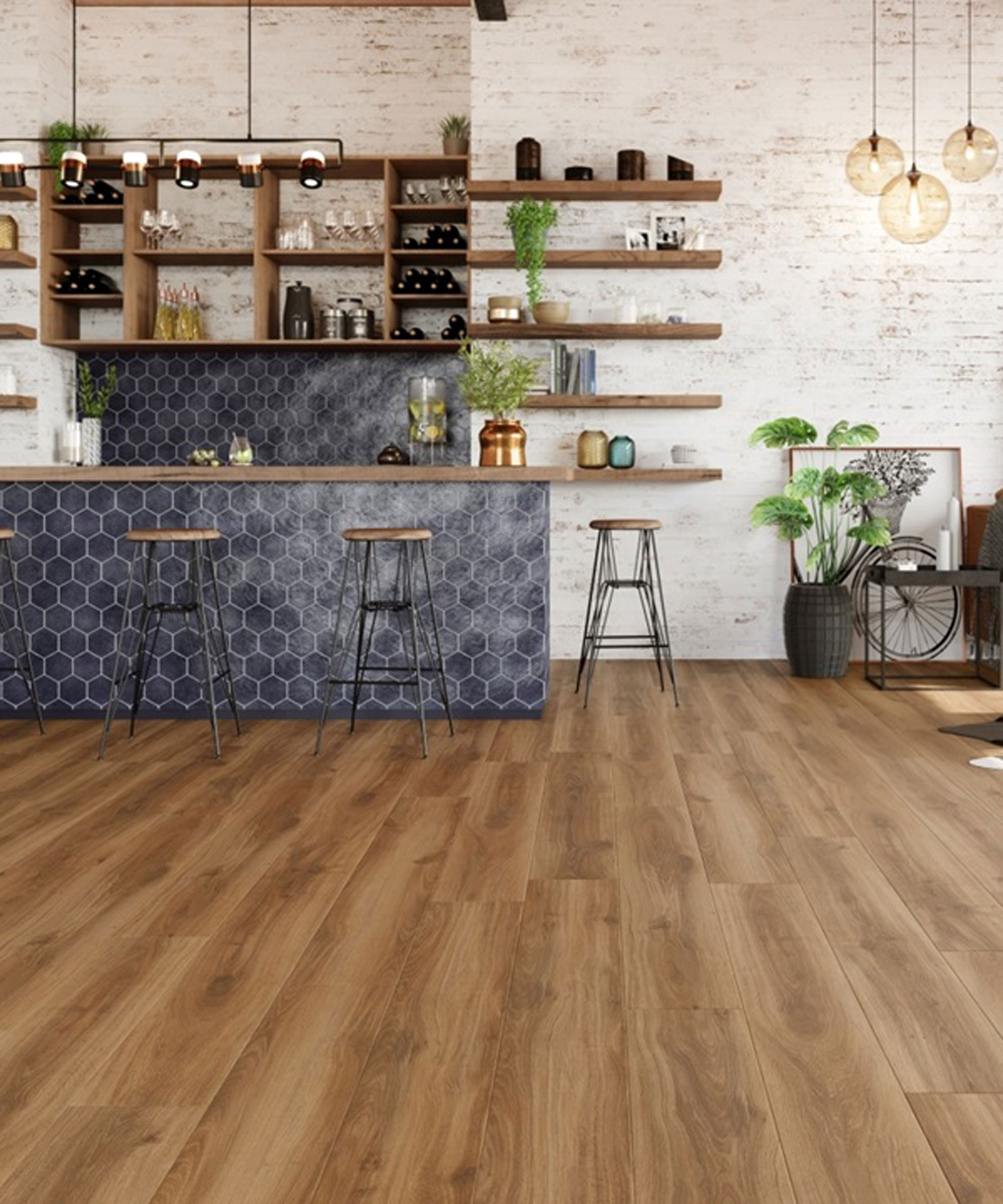
Best budget option
Vinyl flooring is made up of a combination of polyvinyl chloride and plasticizers, with added color pigments. Available in either sheet, tile, or plank form, vinyl is a very useful flooring for a kitchen or bathroom as it is non-porous, but has an element of resilience that makes it comfortable to walk on. This makes a quick fix to a room if you're on a tight budget and in a hurry. But, not the finest type of flooring in a forever home.
Top tips: 'Vinyl floors are now available phthalate-free, but they are not a sustainable or green choice. They are chosen primarily for price and practicality.' Adds Leslie.
Advantages
- Versatile material and can be used to replicate timber, tiles, glass, and stone
- Prices vary from inexpensive to almost the same cost as some solid wood flooring
- Can stand moisture and heavy foot traffic
- Comfortable to walk on
- Warmer on bare feet than tile
Disadvantages
- Not as resilient as real wood flooring
- Cannot be repaired easily
- Can possibly emit VOCs (volatile organic compounds)
- Shorter lifespan
8. Luxury vinyl tiles or plank (LVP)
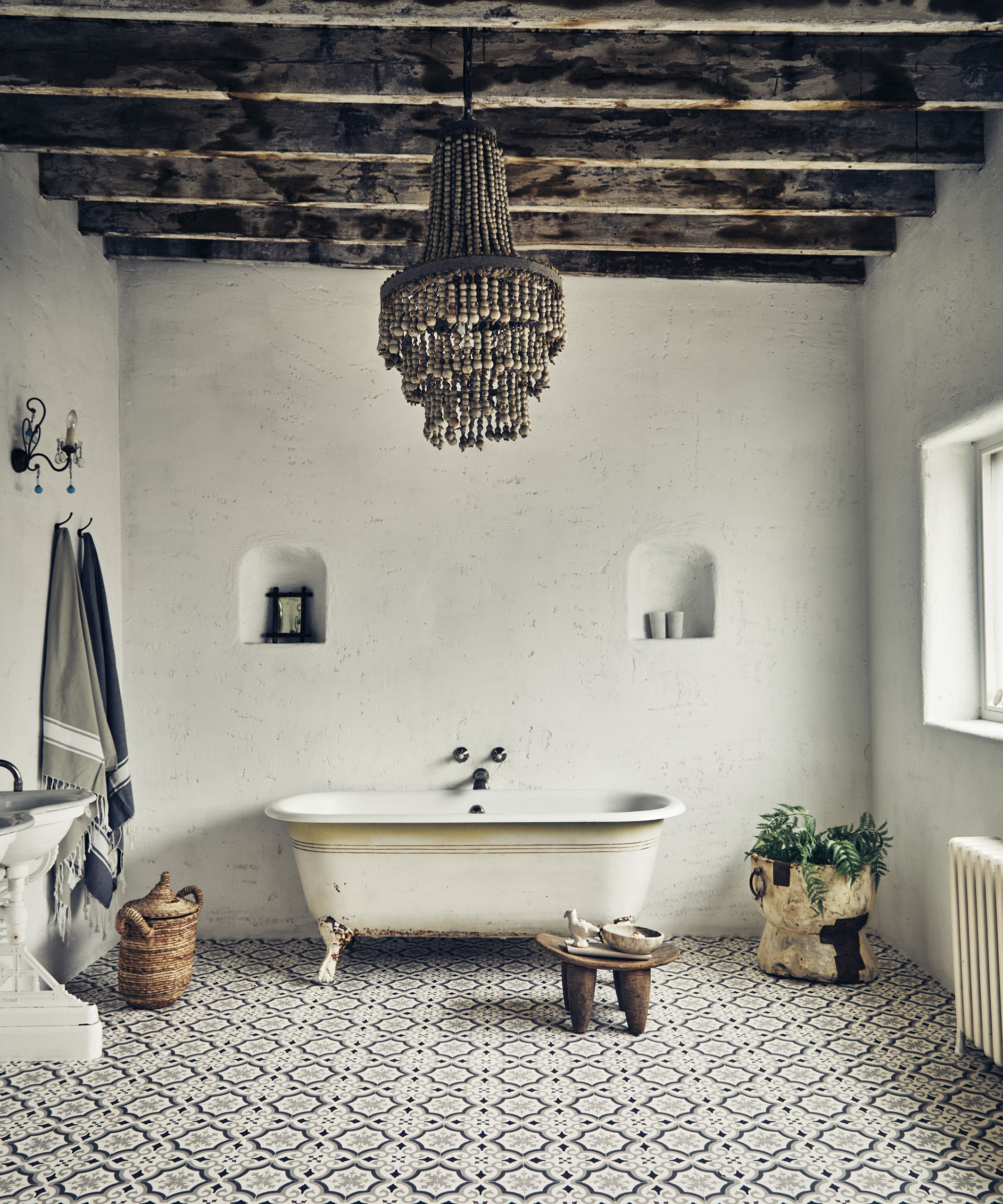
Best for low-matienance care
If you want the benefits of vinyl without the worry of it looking cheap or not lasting very long, there's always the luxury vinyl option. 'When luxury vinyl flooring options entered the picture it was a game changer. Homeowners got the beauty of hardwoods without the upkeep. LVP is not your grandmother’s vinyl flooring – you know the flooring that yellows over time and feels like plastic? LVP rather than coming in sheets, comes in planks.' Says Leigh Spicher, National Director of Design Studios at Ashton Woods Homes.
Top tips: Keep your flooring clean and free from debris to help it last longer.
Advantages
- Look and feel of hardwoods in a material that is much more durable
- Typically more cost-effective than hardwood
- Can be used throughout the home including wet areas
Disadvantages
- More expensive than traditional vinyl fooring
9. Carpet
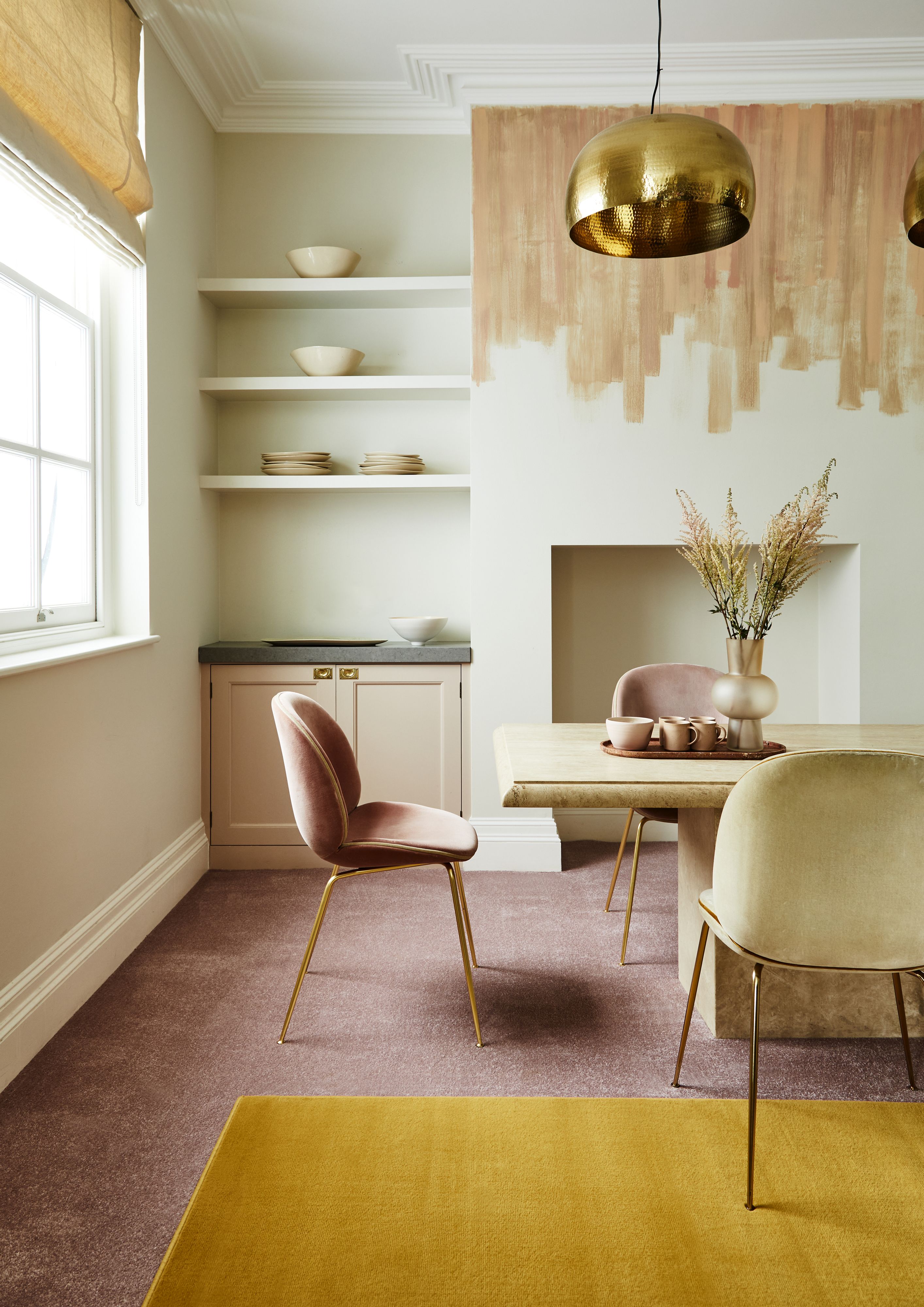
Best for colder climates
Available in either synthetic fibres, pure wool, or a mix of both, carpets come in a vast array of colors and budgets to suit every room (although they’re best avoided in a kitchen or bathroom. Newer commercial-type carpet squares are more appropriate for playrooms and home gyms, due to their lower pile height and stain-resistant treatments.
Some aren't into carpet because of the dirt and grime they accumulate but it's nothing that the best vacuum cleaner or steam cleaner can't help with.
Top tips: Choose 80 percent wool and 20 percent synthetic carpet for the best combination of wear, thermal insulation, and comfort. A new underlay can prolong the life of a carpet by up to 40 percent, so bear this in mind when you’re buying a carpet.
Little ones (who love spilling) running around? Consider patterned options, just in case you can't lift a stain as they are always trending and more forgiving.
Advantages
- Quiet
- Wall-to-wall installation can make small spaces seem bigger
- Generally affordable if in nylon
- Soft underfoot
- Warm
- Almost all carpet is recyclable
- Wool has the best characteristics of all types since the natural lanolin in wool is stain-resistant and it crushes less underfoot
Disadvantages
- Can attract dirt
- Can be destroyed by pets
- Gets replaced every five to ten years
10. Rubber flooring
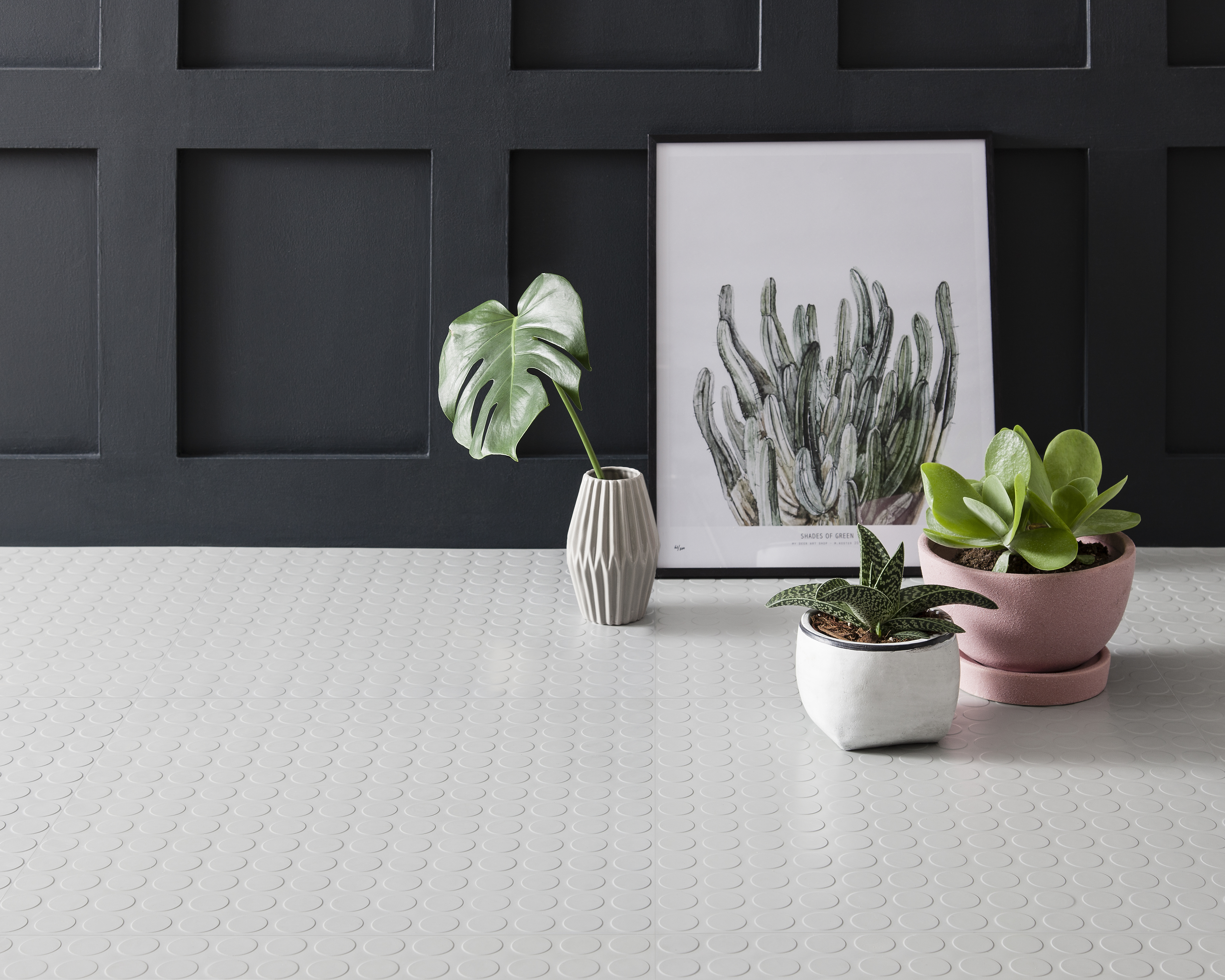
Best for kids with play spaces
Highly resilient, rubber flooring is becoming an increasingly popular option for homes as it's so inexpensive and can make a cool practical addition to play spaces and more.
Available in stunning bright shades, it makes a fun, welcome addition to play areas, wet rooms, and modern living spaces.
Top tips: While rubber flooring is often made synthetically, natural and sustainable options can be found. It requires a plywood sub-floor but is easy for DIY installation thereafter. Once installed, it will need a polished finish every six months.
Advantages
- With entire rubber sheet prices starting at $15-$20 per square foot, it's a way cheaper alternative to tile or stone flooring options
- Can feel light underfoot
- Can withstand moisture
Disadvantages
- Can attract staining from oils and fats
11. Cork
Best for natural materials
Cork gives an unusual finish in homes but works well in lofts or kids spaces. 'Cork was used extensively in mid-twentieth century modern homes, so it's a great choice for modern design.' Adds Leslie.
Top tips: 'Resilient flooring, such as linoleum, luxury vinyl tile, and cork, are great options for most areas of the home, except in a shower. The linoleum/LVT options are many, and they are easy to maintain, are quieter under foot than wood or tile, and they can take being temporarily wet, they are more slippery than a small scale tile.' Continues Leslie.
Advantages
- Resilient
- Quiet underfoot
- Adds amazing visual warmth
- Natural, renewable material
- Can be vacuumed like carpet
Disadvantages
- Heavy items will leave an impression
- Requires maintenance - a lot for the natural finish, less for the cork with a top coat of sealer
FAQs
What is the least expensive flooring?
If your main priority is finding the cheapest types of flooring for your home, look into vinyl. We'd recommend checking the prices of any luxury vinyl options and maybe mixing and matching to help add more style but stay on budget too.
Saying that, it's always worth looking out for any last season sections at stone or tile manufacturers like Fireclay tile or Tilebar to see if you can save on a type of floor that will stand the test of time and be worth your investment in the long run. Likewise, consider picking up some reclaimed wood to fit out your own hardwood floor if you're up for a challenge. You'll often find planks for 50% cheaper than brand new hardwood flooring...
Join our newsletter
Get small space home decor ideas, celeb inspiration, DIY tips and more, straight to your inbox!

I'm Cam, the former deputy editor of Real Homes who worked on the site from 2020 to 2023. As a renter myself, sharing a home with two friends (and my cat) in London, I know all too well the challenges that this can pose when it comes to creating your perfect setup. As someone who has always loved everything interior design-related, I cannot rest until a home feels right and I am really passionate about helping others get there too, no matter what their living situation, style, or budget may be. It’s not always the easiest to figure out, but the journey is fun and the results are so worth it.
After interior design, travel, art, and photography are my next big passions. When I’m not writing or editing homes content, I’m usually tapping into other creative outlets, exploring galleries in London or further afield, taking photos, scribbling, or drawing!